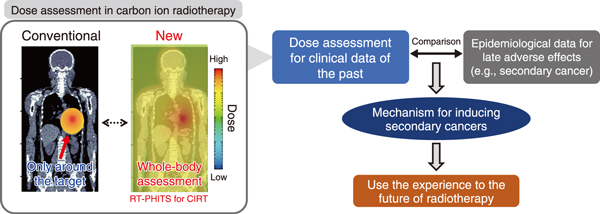
Fig.1 Comparison of dose distribution in anthropomorphic phantom between (a) the conventional calculation and (b) RadioTherapy package based on Particle and Heavy Ion Transport code System (RT-PHITS) for carbon ion radiotherapy (CIRT)

Fig.2 Role of RT-PHITS for CIRT
In radiation therapy, the administration of inadvertent radiation dose to normal tissues other than the target tumor volume cannot be avoided completely, and there is a potential risk of side effects such as cancer (i.e., secondary cancer). To find the cause of such stochastic radiation effects, a comparative study of the radiation dose exposure in each organ and the resulting side effects for a large number of patients is necessary. The incidence of secondary cancers is reported to be lower in the case of carbon ion radiotherapy (CIRT) than in conventional X-ray therapy. However, for CIRT, no system has been developed as yet to compute the dose to distant organs, quantitative evaluations comparing the dose exposure and side effects using statistically sufficient case data have not been performed.
In collaboration with the National Institutes for Quantum Science and Technology (QST), we developed the RadioTherapy package based on Particle and Heavy Ion Transport code System (RT-PHITS) for CIRT. This system enables the evaluation of the detailed dose distribution throughout the body of the patient, including the contributions from secondary particles that are not fully considered in the conventional dose evaluation (Fig.1). The system extracts information on the arrangement of beam devices and patient computed tomography (CT) images from the treatment-planning data of CIRT and reproduces the exact beam geometry of CIRT during treatment. The particle transport in the beam geometry, including secondary particles, was reproduced by PHITS code, a Monte Carlo radiation transport code developed mainly by the JAEA.
In the near future, RT-PHITS for CIRT is expected to be used to re-evaluate the CIRT data compiled in the QST, which has the largest number of CIRT cases in the world. By combining the evaluation results with the epidemiological data of patients, the correlation between side effects and radiation dose exposure after CIRT can be elucidated. Furthermore, using the re-evaluation data, we aim to identify the reasons for the low incidence of secondary cancers in CIRT and the mechanisms underlying the occurrence of side effects in radiotherapy. Clarifying these mechanisms will help devise a new radiotherapy plan that considers the future risk of side effects (Fig.2).
This work is the result of a joint research project between the JAEA and QST. The results have been reported in another journal* after press release.
(Takuya Furuta)
* Furuta, T., Development of Whole-Body Dose Assessment System for Carbon Ion Radiotherapy: RT-PHITS for CIRT, Isotope News, no.787, 2023, p.20-23 (in Japanese).